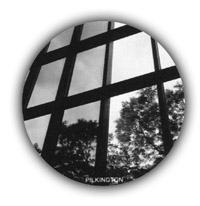Why is glass, being solid, transparent?
2000/10/04 Elhuyar Zientzia
Most liquids and gases are transparent, while solids are not. The difference between these three states of things lies in the relationships between their molecules.
When things are solid, molecules are very tidy and light is very difficult to pass between them, that is, from one side to the other of the solid. In liquids the bonds between molecules are weaker and are not fully ordered, so light can pass from one side to the other. So most liquids are transparent or at least translucent. Finally, the bonds between the molecules of the gases are very weak, they are completely random and the light passes easily from one side to the other.
Although glass crystals also exist in nature, glass is man's thing. To do this, you take silica rich sand, heat it until it melts and let it cool. The result is a solid thing, with strong intermolecular bonds, but very messy. It has so disordered that light also passes among them.
Also at subatomic level the glass must meet a number of requirements to make it transparent. That is, the electrons of the molecules cannot be trapped by photons. A similar process is used to make transparent or translucent plastics.

Gai honi buruzko eduki gehiago
Elhuyarrek garatutako teknologia




